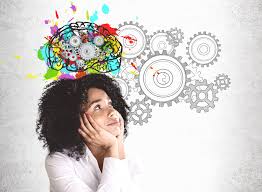Introduction
Cultivating Creativity in the Classroom is rapidly changing world, creativity is more important than ever. It’s a crucial skill that empowers students to think outside the box, solve problems in innovative ways, and adapt to new challenges. However, fostering creativity in the classroom can be challenging, especially with the emphasis on standardized testing and rigid curriculums. So, how can teachers cultivate creativity and imagination in their students? This article explores practical strategies and activities to inspire creativity, turning classrooms into vibrant hubs of innovation and exploration.
Understanding Creativity
What is Creativity?

Creativity is the ability to generate new and original ideas, solutions, or products that are valuable and meaningful. It involves divergent thinking—considering multiple possibilities—and convergent thinking—narrowing down to the best solution. Creativity is not limited to the arts; it’s a critical skill in all fields, from science and technology to business and education.
The Importance of Creativity in Education
Creativity in education goes beyond artistic expression. It enhances critical thinking, problem-solving, and the ability to see connections between seemingly unrelated concepts. Creative students are more likely to be engaged, motivated, and resilient, making creativity a key component of lifelong learning and success.
Creating a Creative Classroom Environment
Encouraging Curiosity and Questioning
Curiosity is the spark that ignites creativity. Encourage students to ask questions, explore new ideas, and seek out answers. Create a classroom culture where curiosity is celebrated, and no question is too small or too silly.
Flexible Seating and Learning Spaces
A rigid classroom setup can stifle creativity. Consider flexible seating arrangements that allow students to move around, collaborate, and find comfortable spaces to think and create. Incorporate areas for quiet reflection, group work, and hands-on activities.
Providing Time for Unstructured Play
Unstructured play is essential for creativity. It gives students the freedom to explore, experiment, and imagine without the constraints of structured tasks. Set aside time for free play, where students can engage in creative activities of their choice.
Also Read Learning a new coding language: A beginner’s guide
Strategies for Fostering Creativity
Integrating the Arts
The arts—music, visual arts, drama, and dance—are powerful vehicles for creativity. Integrate the arts into your curriculum to provide students with opportunities to express themselves, explore different perspectives, and develop creative skills.
Encouraging Creative Writing
Creative writing is a fantastic way to nurture imagination. Encourage students to write stories, poems, and plays. Use writing prompts, story starters, and creative exercises to inspire their writing.
Using Open-Ended Questions and Tasks
Open-ended questions and tasks allow students to explore multiple solutions and think creatively. Instead of asking yes/no questions, pose questions that require thoughtful responses and critical thinking.
Collaborative Learning
Collaboration fosters creativity by allowing students to share ideas, build on each other’s thoughts, and work together to solve problems. Use group projects, brainstorming sessions, and peer feedback to promote collaborative learning.
Incorporating Technology
Technology can be a powerful tool for creativity. Use digital tools and apps to encourage students to create digital art, produce videos, design games, and explore virtual worlds. Technology opens up new avenues for creative expression and learning.
Promoting a Growth Mindset
A growth mindset—the belief that abilities and intelligence can be developed through effort and practice—is crucial for creativity. Encourage students to embrace challenges, learn from mistakes, and persist in the face of setbacks. Celebrate effort and improvement rather than just outcomes.
Connecting Creativity to Real-World Problems
Show students how creativity can be used to solve real-world problems. Use project-based learning to tackle community issues, environmental challenges, or global concerns. This approach makes learning relevant and meaningful, while also fostering creativity.
Activities to Inspire Creativity
Design Thinking Projects
Design thinking is a problem-solving process that involves empathy, ideation, prototyping, and testing. Use design thinking projects to encourage students to develop innovative solutions to real-world problems. Guide them through the steps of understanding user needs, brainstorming ideas, creating prototypes, and refining their solutions.
Storytelling and Role-Playing
Storytelling and role-playing activities allow students to step into different characters’ shoes and explore various perspectives. Use storytelling prompts, improv games, and role-playing scenarios to spark their imagination and creativity.
Makerspaces and DIY Projects
Makerspaces are creative spaces where students can tinker, build, and invent. Set up a makerspace in your classroom with tools, materials, and resources for DIY projects. Encourage students to explore their interests, experiment with new ideas, and create something original.
Visual Art and Crafts
Artistic activities such as drawing, painting, and crafting provide students with an outlet for creative expression. Use art projects to explore different techniques, materials, and themes. Encourage students to experiment, take risks, and express their unique vision.
Music and Dance
Music and dance are powerful forms of creative expression. Incorporate music and movement into your lessons to inspire creativity and engage students. Use rhythm games, dance challenges, and music composition activities to foster creative thinking and expression.
The Role of Teachers in Fostering Creativity
Being a Creative Role Model
Teachers play a crucial role in modeling creativity. Demonstrate your own creative thinking and problem-solving skills. Share your creative projects, ideas, and experiences with your students. Show them that creativity is a lifelong journey.
Providing Constructive Feedback
Constructive feedback helps students refine their creative ideas and develop their skills. Focus on specific aspects of their work, provide actionable suggestions, and celebrate their strengths. Encourage a growth mindset by emphasizing effort and improvement.
Encouraging Risk-Taking
Creativity involves taking risks and trying new things. Encourage students to step out of their comfort zones, experiment with new ideas, and embrace failure as part of the learning process. Create a safe and supportive environment where students feel comfortable taking creative risks.
Celebrating Creativity
Celebrate and showcase students’ creative work. Display their art, share their writing, and highlight their projects. Create opportunities for students to present their work to peers, parents, and the broader community. Celebrating creativity boosts students’ confidence and motivates them to continue exploring their creative potential.
Challenges and Solutions in Fostering Creativity
Overcoming Standardized Testing Pressures
Standardized testing and rigid curriculums can stifle creativity. Advocate for a balanced approach that values creativity alongside academic achievement. Integrate creative projects and activities into your lessons without compromising essential learning objectives.
Addressing Diverse Learning Needs
Students have diverse learning needs and preferences. Use differentiated instruction to provide multiple pathways for creative expression. Offer a variety of activities and allow students to choose projects that align with their interests and strengths.
Managing Classroom Dynamics
Fostering creativity can sometimes lead to a noisy and chaotic classroom. Establish clear expectations and routines to manage classroom dynamics. Use flexible seating, cooperative learning strategies, and structured activities to create an organized and productive creative environment.
The Impact of Creativity on Student Development
Enhancing Critical Thinking Skills
Creativity enhances critical thinking skills by encouraging students to analyze, evaluate, and synthesize information in new ways. Creative thinking involves looking at problems from different angles, making connections between ideas, and developing innovative solutions.
Building Confidence and Self-Esteem
Engaging in creative activities helps students build confidence and self-esteem. When students see their creative ideas come to life, they develop a sense of accomplishment and pride. Positive feedback and recognition further boost their confidence.
Fostering Emotional Expression and Resilience
Creativity provides an outlet for emotional expression and helps students process their feelings. Through creative activities, students can explore their emotions, express their thoughts, and develop emotional resilience. Creativity also fosters empathy by allowing students to explore different perspectives and experiences.
The Future of Creativity in Education
Integrating Creativity Across the Curriculum
The future of creativity in education lies in integrating creative thinking across all subjects and grade levels. Creativity should not be confined to the arts; it should be an integral part of math, science, language arts, and social studies. This interdisciplinary approach prepares students for the challenges and opportunities of the future.
Embracing Technology and Innovation
As technology continues to evolve, new opportunities for creativity in education will emerge. Virtual reality, artificial intelligence, and digital collaboration tools will open up new possibilities for creative expression and learning. Educators must stay informed about technological advancements and find innovative ways to incorporate them into their teaching.
Also Read Why Do Most Girls Snub A Guy Who Tries To Approach Them
Fostering a Culture of Creativity
Creating a culture of creativity requires the support and commitment of educators, administrators, parents, and communities. Schools should prioritize creativity in their mission and vision statements, provide professional development for teachers, and create policies that encourage creative thinking and innovation.
Conclusion
Cultivating creativity in the classroom is essential for preparing students for the future. By fostering imagination, critical thinking, and problem-solving skills, educators can help students develop the creativity they need to succeed in a rapidly changing world. Through strategies such as integrating the arts, promoting a growth mindset, and encouraging risk-taking, teachers can create a vibrant and dynamic learning environment where creativity thrives. As we embrace the power of creativity, we unlock the potential of every student and empower them to make a positive impact on the world.
Also Read Learning a new coding language: A beginner’s guide
FAQs
1. Why is creativity important in education?
Creativity is important in education because it enhances critical thinking, problem-solving, and the ability to see connections between concepts. Creative students are more engaged, motivated, and resilient, making creativity a key component of lifelong learning and success.
2. How can teachers foster creativity in the classroom?
Teachers can foster creativity by encouraging curiosity and questioning, integrating the arts, using open-ended questions and tasks, promoting collaboration, incorporating technology, and connecting creativity to real-world problems.
3. What are some practical activities to inspire creativity?
Practical activities to inspire creativity include design thinking projects, storytelling and role-playing, makerspaces and DIY projects, visual art and crafts, and music and dance activities.


